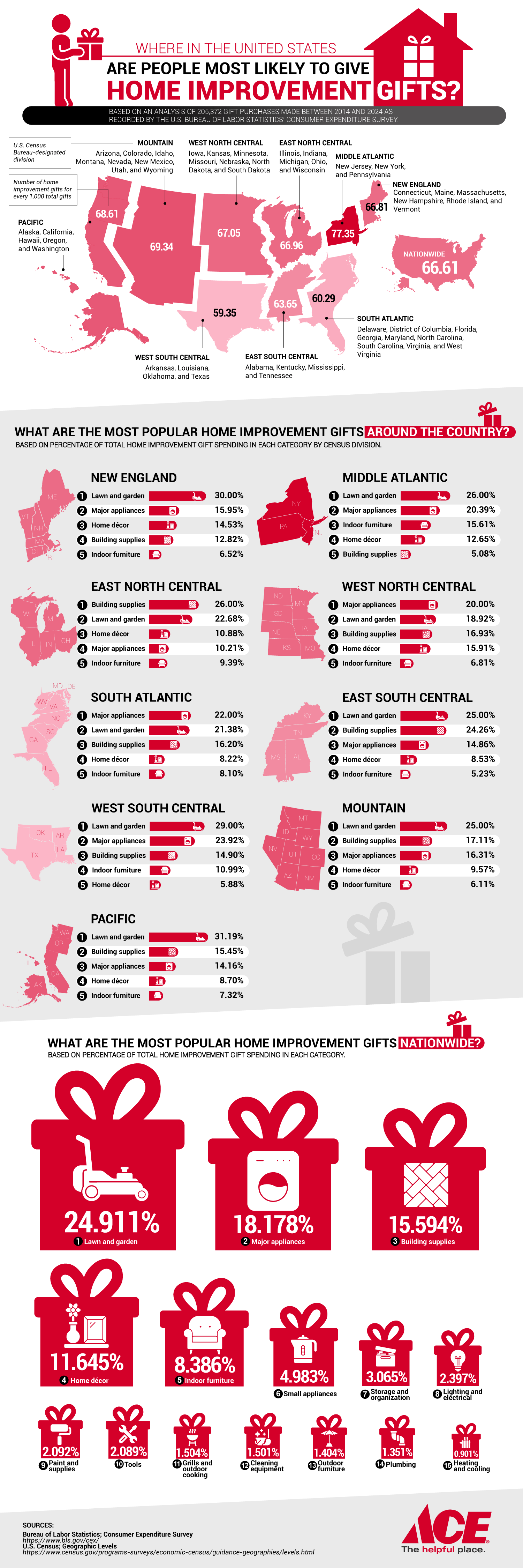Misc Visuals
The Ultimate Guide to Sailing Knots
One of the most important skills to learn as a sailor is the art of knot tying. Knots can be used for so many things across the board. Fishing, crabbing, mooring, docking, sailing, anchoring and even saving lives on the water, just to name a few. A good knot verses a poorly tied knot could mean the difference of your boat floating away in the middle of the night or staying safely secured to the dock or mooring. This visual guide from the team at SeattleYachts.com illustrates 16 of most commonly used boat knots in the nautical world.
Click below to zoom
The half hitch is the first knot represented on the guide and it is touted as the quickest and easiest knot in the boating and sailing world. It is commonly the start of many other knots, like the double half hitch which is a more secure version its original. This knot can help keep boats securely tied to their docks without worry of slippage. The anchor hitch is another important knot represented on this graph. All boats need to use an anchor from time to time and this knot is made to hold heavy loads and also stay tight when there is slack in the line. Knowing the basics of knot tying is also a good survival skill to have. Knots can be used in shelter building, fishing and foraging for food, and even lassos like the bowline, which can be thrown into the water to help save someone who can’t swim. Try your hand at some of these sailboat knots on this visualization and see how your skills compare.
Charts
The States Where Americans Give Hardware and Home Improvement Gifts
As the holidays approach, American families are thinking about gift-giving, and a trend stands out: Americans are giving home improvement and hardware items as useful and practical gifts. According to an Ace Hardware analysis of Bureau of Labor Statistics Consumer Expenditure Survey data spanning a decade of gift purchases, some regions are more likely to gift-wrap DIY tools, garden supplies, and appliances.
Click below to zoom.
Home ownership and upkeep are a major part of the American lifestyle. The team’s study found that 79% of homeowners undertake multiple home improvement projects each year, with many completing three or more. Americans spent $526 billion on home improvement in 2024. The number of projects per household has increased from 2.7 in 2015 to 3.4 in 2023. This commitment to home maintenance explains why hardware and home improvement supplies are a reliable gift choice, especially for people who live in older homes or in harsh climates.
According to the team’s study, the highest amount of home improvement gift-giving occurs in the Mid-Atlantic states, particularly New York, New Jersey, and Pennsylvania. In these states, 77.35 home improvement gifts were given out of every 1,000 gifts purchased. This is a higher rate than the national average of 66.61 gifts per 1,000 gifts purchased.
The popularity of home improvement gifts in the Mid-Atlantic is likely due to the region’s older homes. The median age of a New York home is 62, higher than the national home age median of 40 to 41. Older homes need more upkeep, upgrades, and repairs, making home improvement gifts all the more valuable and appreciated. The average age of homeowners in these properties is around 58, suggesting that these older homeowners have more financial stability to invest in larger home improvement projects. Extreme weather in these regions with cold winters and variable seasons necessitates ongoing maintenance.
The team determined the most popular types of home improvement gifts. Here’s how it broke down:
- Lawn and garden supplies – 24.91% of all home improvement gifts
- Major appliances – 18.18% of all home improvement gifts
- Building supplies – 15.59% of all home improvement gifts
- Home décor – 11.65% of all home improvement gifts
- Indoor furniture – 8.39% of all home improvement gifts
- Small appliances – 4.98% of all home improvement gifts
- Storage/organization items – 3.07% of all home improvement gifts
- Lighting/electrical supplies – 2.40% of all home improvement gifts
- Paint and painting supplies – 2.09% of all home improvement gifts
- Tools – 2.09% of all home improvement gifts
These numbers show that many Americans consider home improvement gifts to be both functional and meaningful. These gifts contribute to long-term comfort and the value of a home. The numbers might reflect that home improvement gifts are shifting beyond the scope of DIY aficionados to a universally appreciated gift. As homeowners juggle time and effort on the upkeep of their homes, these gifts can make their work easier and their home more enjoyable. Home improvement items are likely to remain a major aspect of holiday gift-giving.
Misc Visuals
How to Avoid Scams in 2025
Americans will collectively lose over $2 billion to scams this year. As technology advances, scammers and fraudsters use more sophisticated tactics that are harder for victims to identify and avoid. The team at Ooma created a list of up-to-date tips and methods to prevent fraud and scams via email, text, phone, and Internet messages. With proper prevention and education, people can avoid falling into a scammer’s trap. One in three people who have reported fraud lost money as a result, so the team’s advice can help people avoid getting too far into a scammer’s trap if they don’t prevent them entirely.
Click below to zoom.
Phone calls and text messages can be very tricky. Many people have caught on to the practice of avoiding calls from unknown area codes. Lately, scammers have taken advantage of neighborhood spoofing. They use a familiar area code so the people they call are more likely to think it’s someone they know and answer.
Ooma offers these tips for avoiding and navigating scams via the phone:
- Despite number spoofing, you should still avoid answering unknown calls, as answering lets the scammer know your number is active.
- Never share sensitive information like your full Social Security number over the phone. A legitimate company will never request this.
- If the caller starts pressuring you to do something like send money or share information urgently, you can assume they’re a scammer and don’t feel guilty about hanging up the phone.
- Don’t click on links sent through text. It can lead to malware.
- Never act on requests to send money through unusual means like gift cards or cryptocurrency.
- Use spam filters and call-blockers to limit the messages you receive.
- Report spam numbers to your carrier.
Email scams can be just as malicious and difficult to detect, even after getting past malware protection and spam blockers. Here are some of the team’s tips for avoiding email scams:
- Go directly to a website’s domain rather than click on links in unsolicited emails.
- Check the sender’s full address and look out for signs that the address was spoofed.
- Hover your mouse over links to make sure they’re legitimate. Malware domains often include spammy nonsense in their names or names that don’t match the alleged sender.
- Use two-factor authentication on email and logins.
- Make sure your software’s malware protection is up to date.
- If you aren’t sure how to handle a phishing scheme once you’re ensnared, practice with emulators that can help you learn what to say and do.
- Be aware that scammers sound more legitimate these days thanks to the power of AI.
- Have a plan in place for what to do in the event of falling victim to a scam. You should change your passwords and contact your bank immediately.
Ooma’s steps can’t completely eliminate the possibility of fraud, but they are strong best practices to prevent encountering scammers and to deal with them if they contact you. If you follow these steps carefully, you’re very unlikely to lose money to a scam.
Misc Visuals
Study Examines American Slang Trends and What Words We Want to Revive
Words that were once at the cutting edge of language and culture are quickly dumped into a bin of corny, outdated phrases that might get a chuckle if you use them in earnest. Slang is meant to reflect the times, but it’s also intended to express a feeling we don’t have other words for. Preply examined the ins and outs of slang culture in their new study that asked Americans their favorite slang terms, their slang use habits, and which words they would love to see make a comeback.
Click below to zoom.
Words that were once at the cutting edge of language and culture are quickly dumped into a bin of corny, outdated phrases that might get a chuckle if you use them in earnest. Slang is meant to reflect the times, but it’s also intended to express a feeling we don’t have other words for. Preply examined the ins and outs of slang culture in their new study that asked Americans their favorite slang terms, their slang use habits, and which words they would love to see make a comeback.
Words are ever-evolving, and sometimes retro slang makes a big comeback. For example, “cool” is a slang term we’ve used for decades, but there are also countless examples of slang that offer us another way to say “cool” without seeming cliché. It might surprise you to learn which phrases were the most popular choices to revive.
Here’s the list of top terms:
- Baloney
- Take a chill pill
- Bogus
- Cruisin’ for a bruisin’
- Groovy
- Spiffy
- Heebie-jeebies
- Gnarly
- Knuckle sandwich
- Rad
- Wassup?
- Chillax
- The bee’s knees
- Da bomb
- Mellow out
- Keep on truckin’
- Booyah!
- As if!
- Made in the shade
- Snafu
Over 50% of respondents chose those top three terms. Each term comes from a different decade, and “bogus” and “baloney” mean more or less the same thing. But bogus and baloney give a cheeky flair and a sense of outrage to the alternative, which is to say, “that’s absolute nonsense.” Slang usually sounds informal and adds another layer of emotion to what the speaker tries to express.
The respondents said that ‘90s slang was their favorite of all time, except for baby boomers, who all prefer slang from the 1960s. Interestingly, men preferred ‘70s slang and women preferred ‘90s slang. Gen X is the most nostalgic about slang from their childhood, which might account for the popularity of ‘90s and ‘80s slang.
Gen Z is most likely to use old slang as a joke or ironically. They’re also the quickest to flinch over outdated slang, and their slang changes quickly as it’s based on social media trends and memes that feel passe within a few weeks. Gen Z is also the most unfamiliar with older slang, with 80% having had to Google the meaning of a slang word from the past.
Slang captures who we are in cultural moments, whether we’re talking about the pre- or post-Internet age. Slang unites us with phrases that allow us to share humor, rebellion, or a sense of identity. The study shows fascinating patterns of language, too. We can say something is rad, lit, or fire, and they all generally mean the same thing (“cool”), but the people using those words are probably from different generations. People who feel nostalgia for slang are reminded of what they saw as a simpler past, or they yearn for the pop culture that spawned these phrases. Preply’s work is a true celebration of language and culture!
Words are ever-evolving, and sometimes retro slang makes a big comeback. For example, “cool” is a slang term we’ve used for decades, but there are also countless examples of slang that offer us another way to say “cool” without seeming cliché. It might surprise you to learn which phrases were the most popular choices to revive.
Here’s the list of top terms:
- Baloney
- Take a chill pill
- Bogus
- Cruisin’ for a bruisin’
- Groovy
- Spiffy
- Heebie-jeebies
- Gnarly
- Knuckle sandwich
- Rad
- Wassup?
- Chillax
- The bee’s knees
- Da bomb
- Mellow out
- Keep on truckin’
- Booyah!
- As if!
- Made in the shade
- Snafu
Over 50% of respondents chose those top three terms. Each term comes from a different decade, and “bogus” and “baloney” mean more or less the same thing. But bogus and baloney give a cheeky flair and a sense of outrage to the alternative, which is to say, “that’s absolute nonsense.” Slang usually sounds informal and adds another layer of emotion to what the speaker tries to express.
The respondents said that ‘90s slang was their favorite of all time, except for baby boomers, who all prefer slang from the 1960s. Interestingly, men preferred ‘70s slang and women preferred ‘90s slang. Gen X is the most nostalgic about slang from their childhood, which might account for the popularity of ‘90s and ‘80s slang.
Gen Z is most likely to use old slang as a joke or ironically. They’re also the quickest to flinch over outdated slang, and their slang changes quickly as it’s based on social media trends and memes that feel passe within a few weeks. Gen Z is also the most unfamiliar with older slang, with 80% having had to Google the meaning of a slang word from the past.
Slang captures who we are in cultural moments, whether we’re talking about the pre- or post-Internet age. Slang unites us with phrases that allow us to share humor, rebellion, or a sense of identity. The study shows fascinating patterns of language, too. We can say something is rad, lit, or fire, and they all generally mean the same thing (“cool”), but the people using those words are probably from different generations. People who feel nostalgia for slang are reminded of what they saw as a simpler past, or they yearn for the pop culture that spawned these phrases. Preply’s work is a true celebration of language and culture!
-
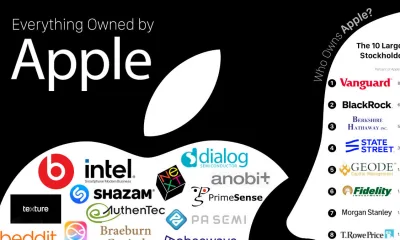
 Business Visualizations1 year ago
Business Visualizations1 year agoEverything Owned by Apple
-

 Business Visualizations1 year ago
Business Visualizations1 year agoAmerica’s Most Valuable Companies Ranked by Profit per Employee
-
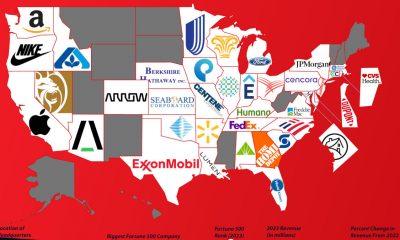
 Business Visualizations10 months ago
Business Visualizations10 months agoThe Biggest Fortune 500 Company in Every State
-

 Business Visualizations8 months ago
Business Visualizations8 months agoThe Biggest Employers by Industry
-
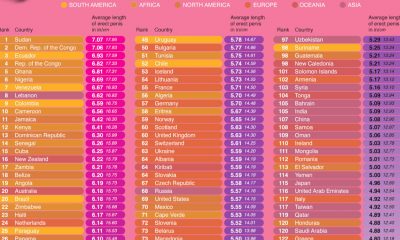
 Maps2 years ago
Maps2 years agoPenis Lengths Around the World
-
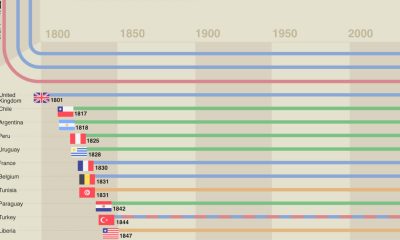
 Timelines2 years ago
Timelines2 years agoA History of the Oldest Flags in the World
-
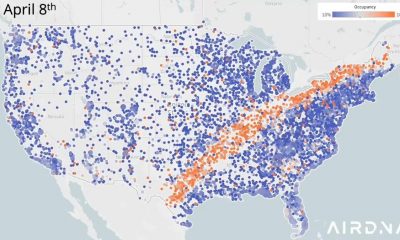
 Business Visualizations2 years ago
Business Visualizations2 years agoNew Animated Map Shows Airbnb’s Fully Booked Cities Along the 2024 Eclipse Path of Totality
-

 Business Visualizations2 years ago
Business Visualizations2 years agoEverything the Luxury Giant LVMH Owns in One Chart


